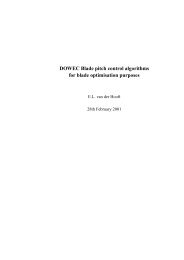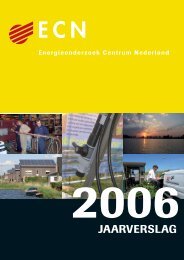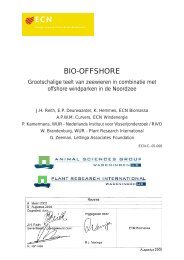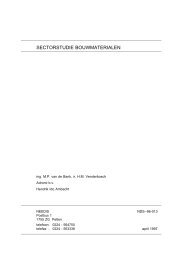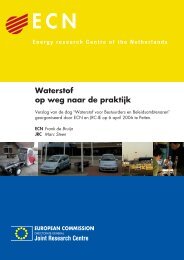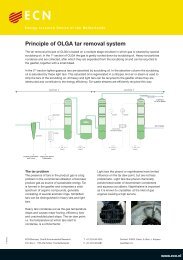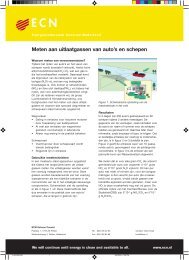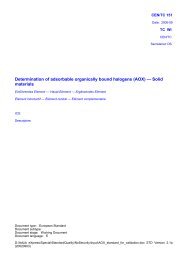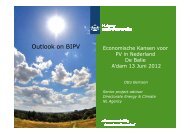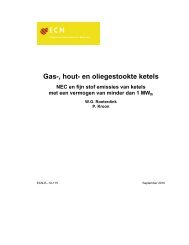PDF format (503 kB) - ECN
PDF format (503 kB) - ECN
PDF format (503 kB) - ECN
Create successful ePaper yourself
Turn your PDF publications into a flip-book with our unique Google optimized e-Paper software.
Blast furnace routes<br />
Smelting reduction routes<br />
Direct reduction routes<br />
Scrap based routes<br />
1 2 1 2<br />
5* 4 6*<br />
4<br />
3<br />
7*<br />
4 8*<br />
4<br />
11 11<br />
3<br />
Air blast furnace route Oxygen blast furnace route<br />
11 11<br />
COREX route CCF route<br />
Midrex route Circofer route<br />
9* 10*<br />
12 12<br />
AC EAF DC EAF<br />
12 13<br />
CO2 removal [11] is only attractive in processes that produce gas volumes with sufficiently high CO2 concentrations.<br />
The figures 4 and 5 display emissions in case of CO2 removal. CO2 removal amount 80 % from the<br />
air-based blast furnace at 32 ECU/t CO2 and 90 % from the oxygen based blast furnace, COREX and CCF at 30<br />
ECU/t (see table 1). CO2 removal takes place by the water gas shift reaction which converts most carbon to<br />
CO2, and is followed by removal of the CO2. The overall removal processs consumes steam and electricity.<br />
MIDREX and Circofer already include CO2 removal; additional costs of compression, transport and storage<br />
amount to 10 ECU/t CO2.<br />
4



